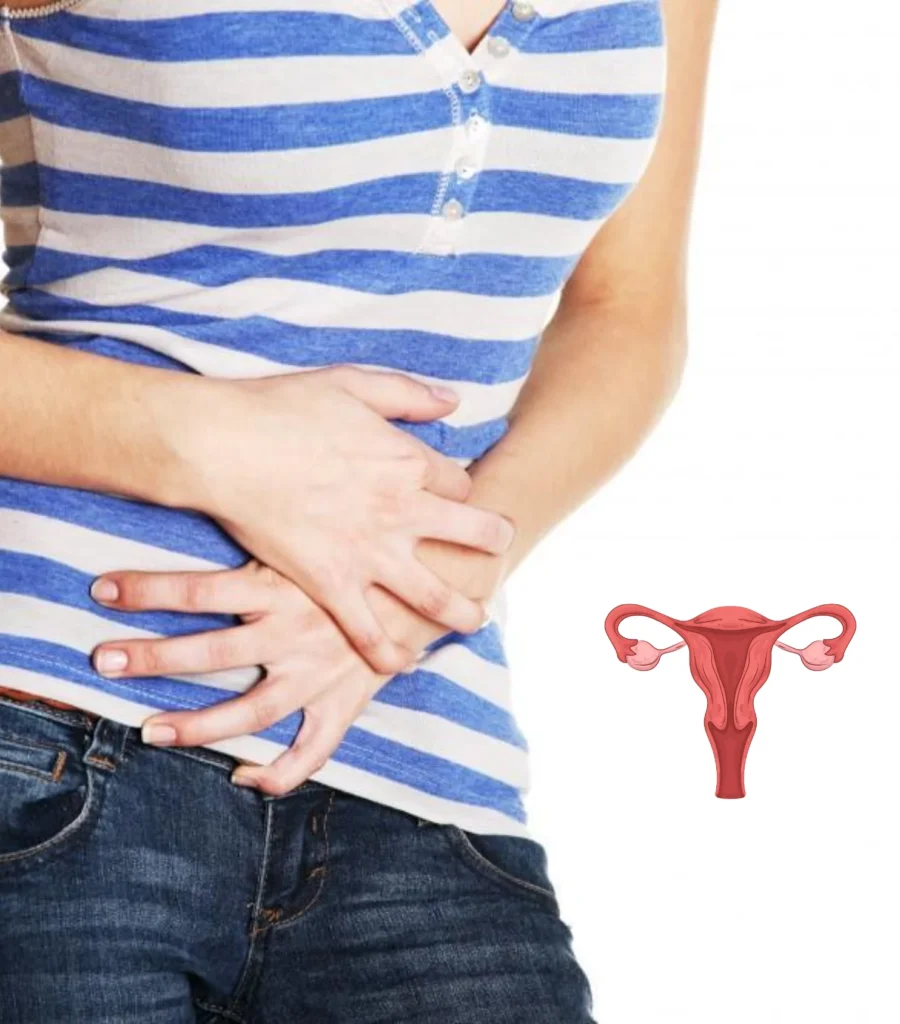
Premenstrual Dysphoric Disorder Treatment in Hyderabad: Advanced Women's Care at Lux Hospitals
Premenstrual Dysphoric Disorder (PMDD) is a severe form of premenstrual syndrome that can deeply affect a woman’s emotional and physical well-being. It goes beyond the usual PMS symptoms and can interfere with daily life, relationships, and mental health. At Lux Hospitals, Gachibowli, we offer specialized Premenstrual Dysphoric Disorder Treatment in Hyderabad, combining compassionate care, expert diagnosis, and modern treatment options tailored to each woman’s needs.Our gynecology and women’s health specialists are dedicated to helping women regain balance and control over their bodies with effective and evidence-based solutions for Premenstrual Dysphoric Disorder.
What is Premenstrual Dysphoric Disorder (PMDD)?
PMDD is a serious medical condition that affects women in the days or weeks before their menstrual cycle. Unlike common PMS, PMDD causes intense mood swings, irritability, anxiety, depression, and physical symptoms that can disrupt a woman’s normal routine. In simpler terms, PMDD is like PMS, but more intense—making it hard to concentrate, work, or even maintain relationships.
Causes of Premenstrual Dysphoric Disorder (PMDD)
While the exact cause of PMDD is still being studied, it’s believed to be linked to hormonal changes during the menstrual cycle and how these hormones affect brain chemicals like serotonin. Other possible causes include:
- Sensitivity to hormonal fluctuations
- Genetic predisposition
- History of anxiety or depression
- Stress or lifestyle-related triggers
Symptoms of Premenstrual Dysphoric Disorder (PMDD)
The premenstrual dysphoric disorder symptoms usually appear one to two weeks before menstruation and fade once the period begins. Common symptoms include
- Severe mood swings or irritability
- Depression or feelings of hopelessness
- Anxiety or tension
- Difficulty concentrating
- Fatigue or low energy
- Changes in sleep patterns (insomnia or excessive sleep)
- Food cravings or appetite changes
- Bloating, breast tenderness, or joint/muscle pain
If these symptoms significantly impact your day-to-day life, it’s time to seek professional help.
Treatment options for Premenstrual Dysphoric Disorder(PMDD)
At Lux Hospitals, we offer personalized and advanced premenstrual dysphoric disorder treatment in Hyderabad, focused on improving both mental and physical health. Our approach includes:
Treatment Options for Adenomyosis
- Antidepressants (SSRIs): To manage mood-related symptoms.
- Hormonal Therapies: Including birth control pills to regulate hormonal fluctuations.
- Non-hormonal Medications: Like anti-anxiety drugs and pain relievers.
Medical Management
- Hormonal therapy (oral contraceptives, IUDs)
- Pain relievers like NSAIDs
- Hormone-regulating medications (GnRH agonists)
Lifestyle and Nutritional Counseling
- Diet changes to reduce sugar, caffeine, and processed foods.
- Personalized exercise plans and stress reduction techniques like yoga or meditation.
- Sleep hygiene and mindfulness practices.
Cognitive Behavioral Therapy (CBT)
CBT is highly effective in managing emotional symptoms by helping patients identify and change negative thought patterns.
Supplementation
We may recommend calcium, vitamin B6, magnesium, and omega-3 supplements to reduce symptoms naturally.
Who need this PMDD Treatment?
- Your symptoms appear regularly before your period.
- Emotional and physical symptoms interfere with work or personal life.
- You experience severe mood swings, anxiety, or depression.
- PMS symptoms do not improve with over-the-counter remedies.
Why Choose Lux Hospitals for Sexual Dysfunction Treatment in Hyderabad?
At Lux Hospitals, Gachibowli, we combine medical expertise with empathy to provide the best Premenstrual dysphoric disorder treatment in Hyderabad. Here’s why patients choose us:
- Experienced Team: Our multidisciplinary experts include top gynaecologists, and sexologists.
- Advanced Facilities: From diagnostics to treatment, we use state-of-the-art equipment in a comfortable, private, customized environment.
- Customized Approach: Every patient is different—we tailor our therapies to your personal and medical history.
- Confidential and discrete: We value your privacy.
Benefits of Premenstrual Dysphoric Disorder Treatment at Lux Hospitals
- Compassionate care with a woman-centric approach.
- Personalized treatment plans.
- Quick diagnosis using modern diagnostic tools.
- Multidisciplinary team including gynecologists, psychologists, and dietitians.
- Supportive and confidential environment.


Testimonials
"I could walk on day 2 of my surgery"
Dr.Harshitha is the safest hands to be in. I underwent myomectomy for fibroids , I could walk on day 2 of my surgery with a fast recovery. Mam gives all the time you need for consultation, listens very patiently. At Lux hospital, all the staff is very friendly and caring and cleanliness maintained 24/7

Kunapuri Renuka
"Uterine fibroid and went on with a myomectomy"
I was diagnosed with large uterine fibroid and went on with a myomectomy to get it removed at Lux Speciality Hospital. The treatment which I received at Lux was very satisfactory. Dr.Harshitha en visible, thank you very much for that.

Sirigiri Prashanthi Prashanthi
"She gave me sufficient time and correct advice"
Dr.Harshitha is such wonderful doctor. She is very friendly and intelligent Dr . She make me very comfortable. After I got operated for hysterectomy I m doing very well after that. At every appointment she gave me sufficient time and correct advice. God Bless you Dr.

Divya S
"Good laparoscopic Gynecologist "
Dr.Praginia is an exceptional laparoscopic surgeon. The surgery was done with quick recovery time. I felt reassured throughout the entire process. The entire OT staff and anaesthesia team was extremely good. The support staff was also professional and caring, which made the experience even better.I highly recommend Dr.Harshitha to anyone seeking a good laparoscopic Gynecologist . I am very happy with the care I received.

Vandu Nana (Vandu)
Latest Health Articles by Lux
Frequently Asked Questions
While both PMS (Premenstrual Syndrome) and PMDD (Premenstrual Dysphoric Disorder) involve emotional and physical symptoms before menstruation, PMDD is more severe. It can cause intense mood swings, irritability, and depression that can interfere with daily functioning and quality of life.
Common symptoms include severe mood swings, anger or irritability, anxiety, depression, fatigue, changes in sleep patterns, breast soreness, bloating, and food cravings. Usually starting 1-2 weeks before to menstruation, these symptoms get better as soon as your period begins.
PMDD is a chronic condition but can be effectively managed with the right treatment. Options include lifestyle changes, medications like antidepressants or hormonal therapy, and counseling. With proper care, many women experience significant relief from their symptoms.
If your emotional or physical symptoms are intense, disrupt your daily life, or persist over several months, it’s important to consult a gynecologist or mental health professional. Early diagnosis can help you find the right Premenstrual Dysphoric Disorder Treatment and improve your quality of life.
You should consult a gynecologist experienced in hormonal disorders or a psychiatrist for PMDD. At Lux Hospitals, our team of experts collaborates to offer comprehensive and personalized care for PMDD.
Yes. A balanced diet, regular exercise, stress-reduction methods like yoga or meditation, and restful sleep can all greatly lessen PMDD symptoms. A more comprehensive treatment strategy frequently includes these.
Medications like SSRIs (antidepressants), birth control pills, or hormonal therapy are commonly prescribed for moderate to severe PMDD. Based on your symptoms and general health, your doctor will recommend a course of treatment.
Yes, PMDD has a strong emotional and psychological component. Many women experience anxiety, irritability, or depressive symptoms severe enough to interfere with daily life. This is why it’s important to get a holistic evaluation that includes mental health support.
The cost of PMDD treatment at Lux Hospitals depends on the treatment plan recommended, which may include medication, hormonal therapy, or counselling. Our specialists will evaluate your symptoms and tailor a care plan accordingly. For a detailed estimate, we recommend scheduling a consultation.
To consult one of our specialists for Premenstrual Dysphoric Disorder Treatment in Hyderabad, call us at 07969084444 or email care@luxhospitals.com. We are conveniently located in Gachibowli, Hyderabad.



















